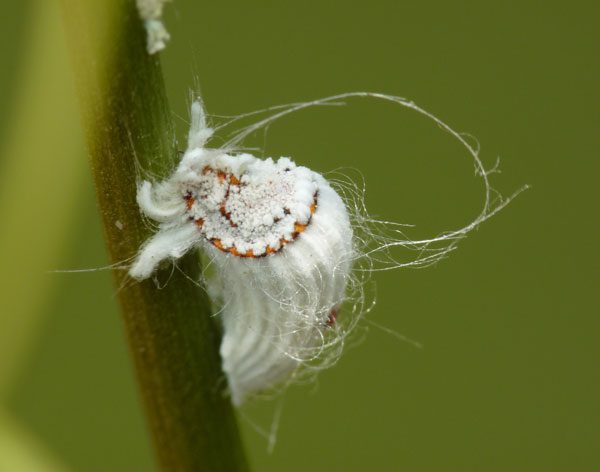Scientists Discover Unique Reproductive Behavior in Cottony Cushion Scale (Icerya purchasi) The female cottony cushion scale has the remarkable ability to self-fertilize its eggs without mating with a male.
Previously, entomologists believed that cottony cushion scales self-fertilized their eggs because they are hermaphroditic, possessing both male and female reproductive organs.
However, researchers from the University of Oxford (UK) have recently discovered that female cottony cushion scales do not actually self-fertilize their eggs; instead, they utilize a parasitic tissue present since birth.
“This tissue comes from unused sperm from their father. He has found a sneaky way to have more offspring by mating with his daughters,” said researcher Laura Ross.

Cottony Cushion Scale
As this parasitic tissue becomes more prevalent among female cottony cushion scales, the females tend to give birth using the “parasitic father,” rather than mating with living males.
From the female’s perspective, mating with close relatives ensures that they pass on more copies of their genes to future generations. However, males are increasingly finding it difficult to locate willing mates.
The cottony cushion scale was first discovered in 1878 on acacia trees in New Zealand. This insect species has since spread worldwide and is commonly found on citrus trees (such as oranges, grapefruits, lemons, and mandarins).



















































